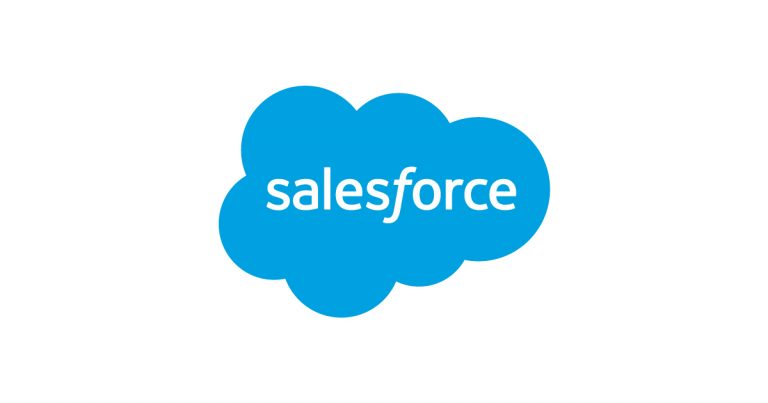As an OG in our Salesforce world, one of the things I love about Net Zero Cloud is that it takes me back to the early days of Salesforce. Just like Sales Cloud, with Net Zero Cloud, Salesforce are their own first customer.
This product has been in the works for several years, with Salesforce starting out by building an in-house solution for their own carbon accounting. They went through various iterations on a limited access version (via a private app exchange listing) before releasing the latest version into GA on the platform in April.
It’s been a minute since Salesforce launched a new Salesforce product (rather than acquiring additions to the platform) and that in itself is significant for all of us. Think about the other platforms Salesforce has launched and how much they’ve grown since their initial arrival on the platform – you begin to see why I’m so excited about this space!
Is There Space for Net Zero Cloud?
When searching for “potential value of sustainable tech”, the answer’s going to show trillions of dollars, not billions. Salesforce aren’t just being good for the planet by going after this space, it’s good for their bottom line too.
The predicted growth in sustainable tech is as assured as the inevitable increased prioritization of responding to climate change. Salesforce Net Zero Cloud isn’t going to stay as it is today for long. The apps, accelerators, and partnerships we build onto the platform now are opportunities for the future – my tip is that it’s a great space to be inventing complimentary apps right now.
What Does Net Zero Cloud Do?
There is some great documentation on Trailhead but, in essence, Net Zero Cloud is a group of objects collected together into an app and enabled by permission set licenses. So it’s ready to go in either a clean org or your existing Salesforce org. As ever there are pros and cons with both approaches depending on your use cases and the shape of your existing org.
The aim of Net Zero Cloud is to enable a customer to create an accurate, operational Carbon Footprint that is ready for auditing out of the box – it’s equally suitable for pure communications value or for regulators.
These objects track typical emissions for an operational footprint such as:
- Buildings
- Data Centres
- Travel
- Waste
And, of course, because this is Salesforce, it’s all highly customizable. So, if your organization has a distinctive carbon footprint – maybe it’s heavy on refrigerants or something like that – it’s easy to build those in.

One of the major challenges with carbon accounting is the sheer volume of data – identifying inaccuracies in data has traditionally been a real headache in this space. Salesforce Net Zero Cloud neatly tackles this with a nifty bit of AI called the “Data Gap Filling Log”. This is able to flag basic inconsistencies and create an opportunity that intervenes to correct or estimate incorrect or missing data (standard practice in the carbon accounting space).
It makes the data management job much easier while also making it crystal clear which data is actual and which is estimated – any one who has ever had an energy bill will understand that!

Emissions Factors
Another neat feature is that Net Zero Cloud comes pre-populated with the most common globally recognized emissions factors. The science around carbon footprinting originates with the GHG Protocol, which sets out three scopes of emissions based on emitters’ control over those emissions.
Scope 1 is what you have most direct control over. An example might be a gas boiler in a property you own because you control the boiler – the type, its efficiency, and maintenance, etc.
Scope 2 is the indirect emissions – typically the energy you buy but with less control. For example, electricity supplied to you by the grid – you have some control as to who you buy it from and how much you use, but no direct control over how it’s produced.
Scope 3 emissions are the most indirect. These are the emissions of the things you buy and consume – the gas boiler in a leased property would be Scope 3, for example, because you are consuming its energy but you have no control over the boiler itself.

There are many different gasses that contribute to global warming, each with their own unique chemistry. So, to complete like-for-like analysis, the GHG protocol sets out the use of tco2e (tonnes of CO2 equivalent) as its metric for carbon accounting.
As with any recipe, there are multiple ways to calculate these tco2e numbers. To stop people cheating, recognized emission factors define the calculations to use. In Salesforce terms, we can think about these calculations a bit like the rules in a cpq. They are quite complex, which is why it’s very helpful that they are pre-populated in Net Zero Cloud (but with the ability to add special ones as needed).

Building Energy Intensity
Net Zero Cloud comes with a set of objects that are able to consume energy, use data, and calculate building energy intensity. This is particularly useful for organizations with large estates. Imagine you owned 10 buildings and you wanted to reduce the carbon footprint of all of them, yet one is a new build in a city center, one is a Grade 2 listed building in the countryside, and a third is an office inside a factory built in the 1970s. Each building is so vastly different you can’t possibly compare them! The new build will already be very energy efficient due to recent regulations so it might be the best performer but have little opportunity for improvement. The old building might be limited by the listing constraints and the factory one limited by its other uses.
Building energy intensity is helpful here as it provides a benchmark, enabling you to compare your buildings based on the competition against themselves rather than each other. This allows you to see which building is performing best against its own opportunity to improve – very helpful for deciding where to target limited resources and defining ROI from investment decisions.

Targets and Dashboards
Net Zero Cloud comes with Tableau built in, enabling beautiful dashboards right off the bat! A recent feature is objects for managing targets – probably something a lot of us in the Sales Cloud world are familiar with as an ask, these objects allow a customer to set their targets and then compare them to the actuals.

Suppliers
Net Zero Cloud isn’t going to stay static. There are myriad opportunities for this product and this sector to expand, of which a key one is the supply chain. Net Zero Cloud comes with a Supplier Scorecard so that supply chain carbon accounting can be tracked. This is a great start and definitely an area that I can imagine expanding rapidly.

A Call to Action
Carbon accounting will soon be on every organization’s radar. Now is the time to be talking with your supply chains and customers about how they are managing their carbon accounting, and whether Salesforce Net Zero Cloud could help them achieve this accurately, securely, and efficiently.
All of us need to skill up in this space. Salesforce have temporarily retired their Accredited Partner Certification for Net Zero Cloud while they update the exam, but there are some brilliant Trailheads to help you get acquainted with the product.
As I mentioned above, I think this is a high growth area; I think about the growth of Sales Cloud or – even more ambitiously – the Salesforce platform as a whole, and I imagine a sustainability version of it growing not over 20 years, but over as little as five. It’s a great space to be for any tech entrepreneurs or developers looking to create something to give back to society, as well as something that is simply great business.

All images are from Salesforce Trailhead.









